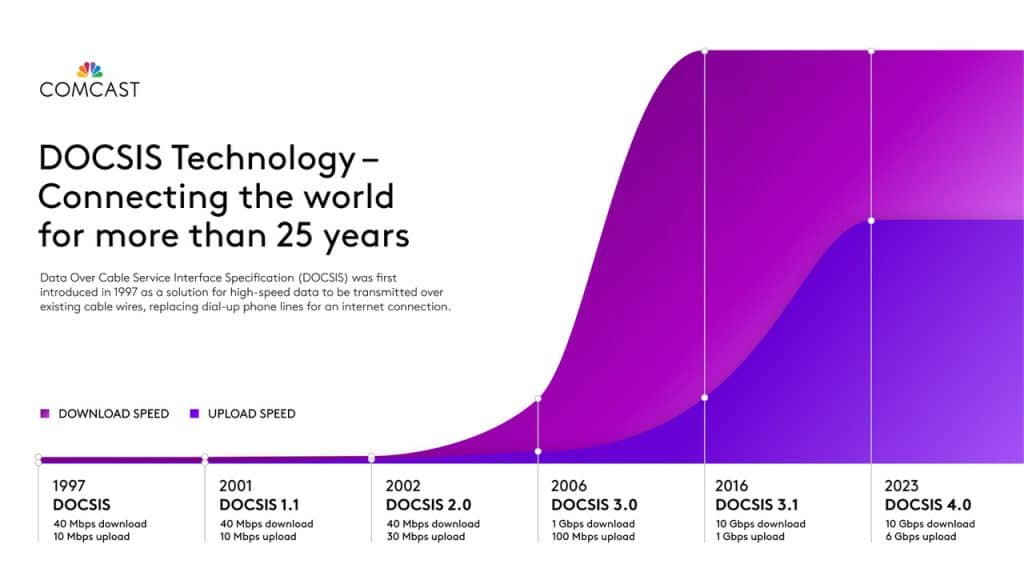Comcast said today that it will roll out DOCSIS 4.0 in Colorado Springs next week and to parts of Atlanta and Philadelphia before the end of this year. The company claims this is a world first.
“Initially, customers subscribing to X-Class Internet plans will use the newest Xfinity Advanced Gateway with a companion modem to deliver multi-gig symmetrical speeds,” explained Comcast Chief Network Officer Elad Nafshi in an email to Telecompetitor. “Next year, Comcast expects to introduce its first DOCSIS 4.0-capable gateways.”
X-Class is a new brand name for the symmetrical internet offerings. Comcast will offer symmetrical speeds up to 2 Gbps.
Symmetrical service tiers will start at 300 Mbps and will also include 500 Mbps and 1 Gbps offerings.
The price will range from $55 monthly for the 300 Mbps service and up to $115 monthly for the 2 Gbps service, a Comcast spokesperson said. Prices are based on using the company’s $10 paperless billing and autopay discount.
The rollout of DOCSIS 4.0 is a big deal for the cable industry because it allows the cable companies to use existing hybrid fiber coax (HFC) technology to offer symmetrical multi-gigabit speeds that will be more competitive with fiber broadband offerings from telcos and overbuilders.
Mid-Splits Coexist with Full-Duplex DOCSIS
Comcast’s symmetrical multi-gigabit offering will use full-duplex DOCSIS (FDX) technology that will share infrastructure with a mid-split approach that the company began rolling out to support multi-gigabit, but not symmetrical, speeds last year.
As Nafshi explained, “We have implemented DOCSIS 4.0 FDX on top of mid-split. They coexist together seamlessly.”
Both FDX and mid-split technology involve the coax portion of the company’s existing HFC network. Both approaches devote a greater portion of the spectrum within the coax to the upstream path in comparison with earlier generation technology.
FDX allows greater flexibility in the speeds offered because there is a portion of the spectrum that can be used for upstream or downstream communications.
Customers currently getting the multi-gigabit, but not symmetrical, service will continue to get their current speed, Nafshi said.

Comcast DOCSIS 4.0
Other network upgrades also support Comcast’s DOCSIS 4.0 deployment, and Comcast has been gradually making these upgrades for several years.
Nafshi confirmed that the infrastructure underlying Comcast’s implementation of DOCSIS 4.0 includes:
- Either 1 GHz or 1.2 GHz of spectrum within the coax portion of the company’s HFC infrastructure, which varies from market to market.
- A virtualized cable modem termination system (vCMTS). This is typically deployed in the network hub.
- DOCSIS 4.0 capable digital nodes. This is an element of distributed authorized access (DAA), in which network intelligence is moved from a centralized location into nodes closer to the end user using either a remote PHY or MAC-PHY approach.
Nafshi told Telecompetitor previously that the company uses a remote PHY approach to provide more sustainable power savings and “ultimately better reliability driven by a simpler software implementation.” He added, though, that a MAC-PHY approach may work fine for some network operators. - Network management tools that use artificial intelligence (AI) and machine learning (ML).
Updated to attribute certain information to Comcast Chief Network Officer Elad Nafshi


